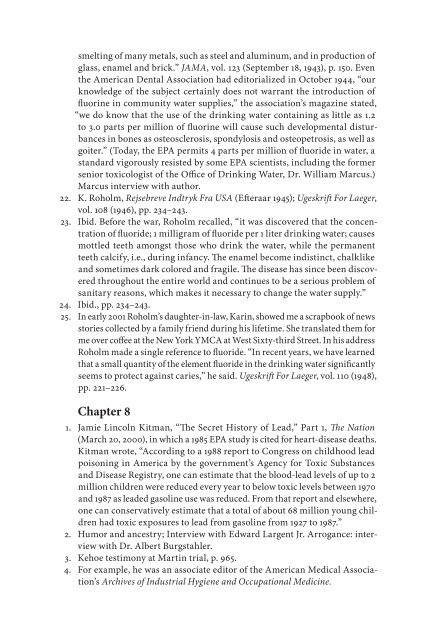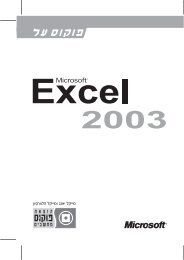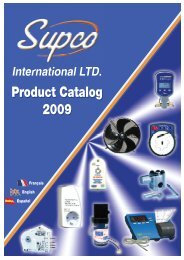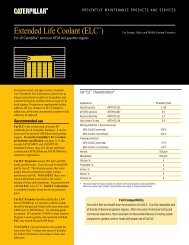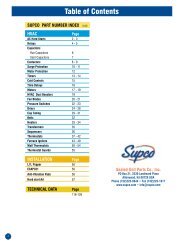Epigraphs Note on Terminology Acknowledgments Introduction
Epigraphs Note on Terminology Acknowledgments Introduction
Epigraphs Note on Terminology Acknowledgments Introduction
You also want an ePaper? Increase the reach of your titles
YUMPU automatically turns print PDFs into web optimized ePapers that Google loves.
smelting of many metals, such as steel and aluminum, and in producti<strong>on</strong> of<br />
glass, enamel and brick.” JAMA, vol. 123 (September 18, 1943), p. 150. Even<br />
the American Dental Associati<strong>on</strong> had editorialized in October 1944, “our<br />
knowledge of the subject certainly does not warrant the introducti<strong>on</strong> of<br />
fluorine in community water supplies,” the associati<strong>on</strong>’s magazine stated,<br />
“we do know that the use of the drinking water c<strong>on</strong>taining as little as 1.2<br />
to 3.0 parts per milli<strong>on</strong> of fluorine will cause such developmental disturbances<br />
in b<strong>on</strong>es as osteosclerosis, sp<strong>on</strong>dylosis and osteopetrosis, as well as<br />
goiter.” (Today, the EPA permits 4 parts per milli<strong>on</strong> of fluoride in water, a<br />
standard vigorously resisted by some EPA scientists, including the former<br />
senior toxicologist of the Office of Drinking Water, Dr. William Marcus.)<br />
Marcus interview with author.<br />
22. K. Roholm, Rejsebreve Indtryk Fra USA (Efteraar 1945); Ugeskrift For Laeger,<br />
vol. 108 (1946), pp. 234–243.<br />
23. Ibid. Before the war, Roholm recalled, “it was discovered that the c<strong>on</strong>centrati<strong>on</strong><br />
of fluoride; 1 milligram of fluoride per 1 liter drinking water; causes<br />
mottled teeth am<strong>on</strong>gst those who drink the water, while the permanent<br />
teeth calcify, i.e., during infancy. The enamel become indistinct, chalklike<br />
and sometimes dark colored and fragile. The disease has since been discovered<br />
throughout the entire world and c<strong>on</strong>tinues to be a serious problem of<br />
sanitary reas<strong>on</strong>s, which makes it necessary to change the water supply.”<br />
24. Ibid., pp. 234–243.<br />
25. In early 2001 Roholm’s daughter-in-law, Karin, showed me a scrapbook of news<br />
stories collected by a family friend during his lifetime. She translated them for<br />
me over coffee at the New York YMCA at West Sixty-third Street. In his address<br />
Roholm made a single reference to fluoride. “In recent years, we have learned<br />
that a small quantity of the element fluoride in the drinking water significantly<br />
seems to protect against caries,” he said. Ugeskrift For Laeger, vol. 110 (1948),<br />
pp. 221–226.<br />
Chapter 8<br />
1. Jamie Lincoln Kitman, “The Secret History of Lead,” Part 1, The Nati<strong>on</strong><br />
(March 20, 2000), in which a 1985 EPA study is cited for heart-disease deaths.<br />
Kitman wrote, “According to a 1988 report to C<strong>on</strong>gress <strong>on</strong> childhood lead<br />
pois<strong>on</strong>ing in America by the government’s Agency for Toxic Substances<br />
and Disease Registry, <strong>on</strong>e can estimate that the blood-lead levels of up to 2<br />
milli<strong>on</strong> children were reduced every year to below toxic levels between 1970<br />
and 1987 as leaded gasoline use was reduced. From that report and elsewhere,<br />
<strong>on</strong>e can c<strong>on</strong>servatively estimate that a total of about 68 milli<strong>on</strong> young children<br />
had toxic exposures to lead from gasoline from 1927 to 1987.”<br />
2. Humor and ancestry; Interview with Edward Largent Jr. Arrogance: interview<br />
with Dr. Albert Burgstahler.<br />
3. Kehoe testim<strong>on</strong>y at Martin trial, p. 965.<br />
4. For example, he was an associate editor of the American Medical Associati<strong>on</strong>’s<br />
Archives of Industrial Hygiene and Occupati<strong>on</strong>al Medicine.


